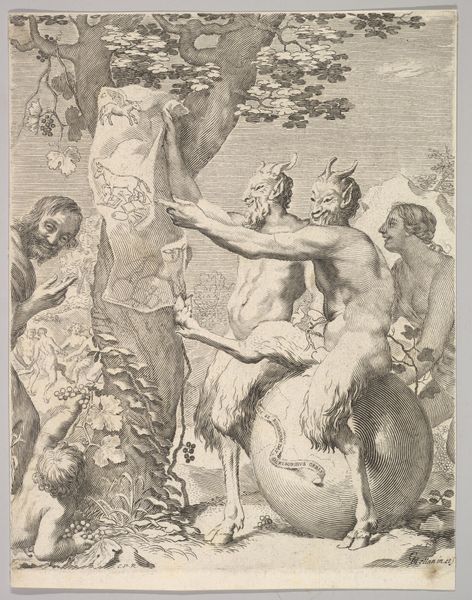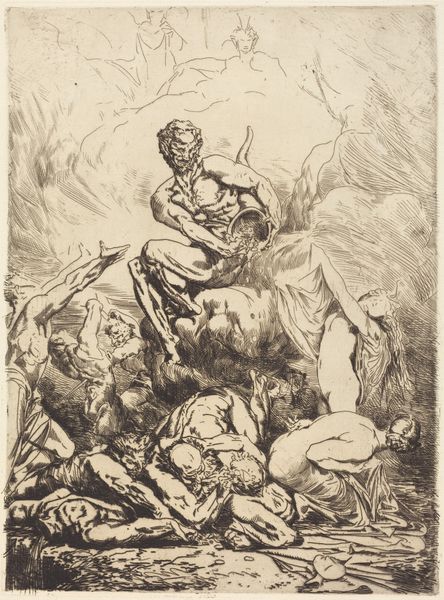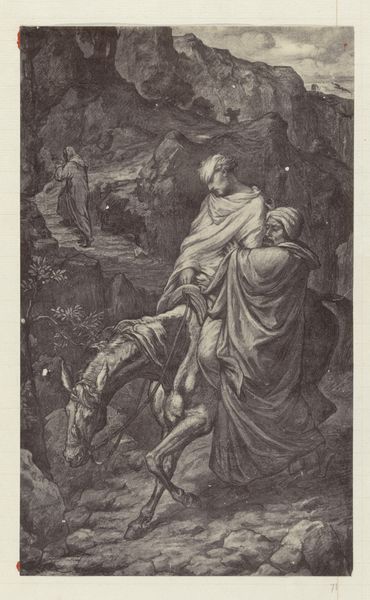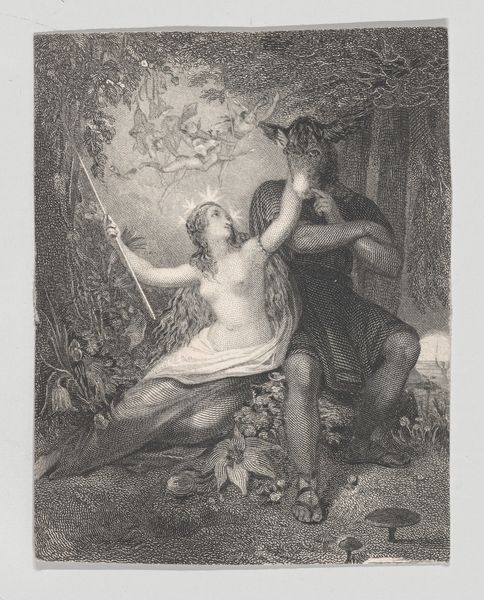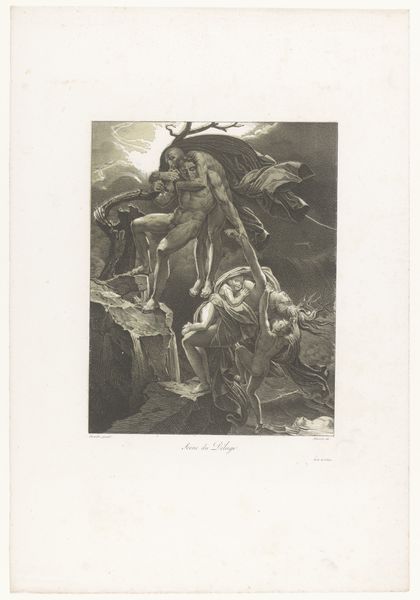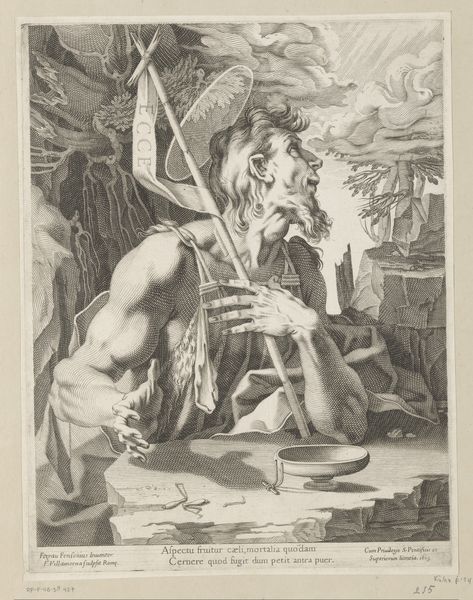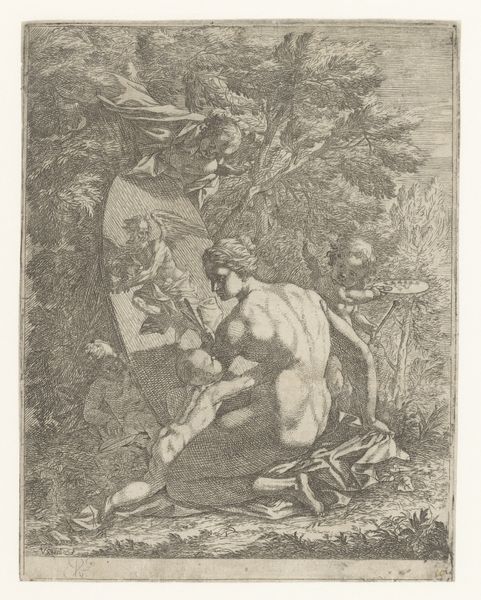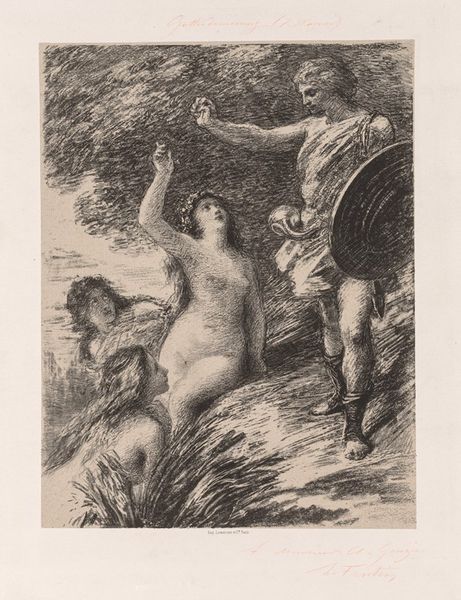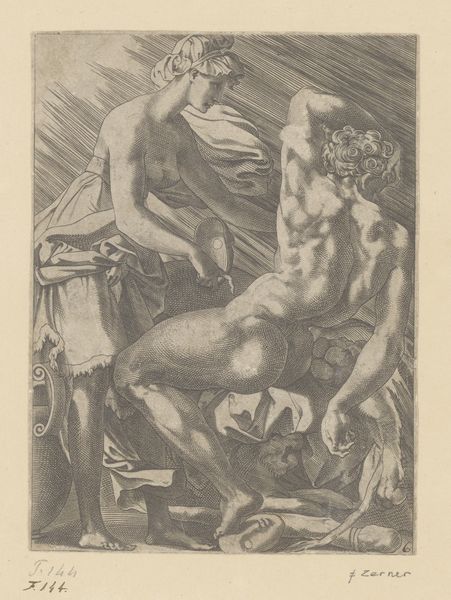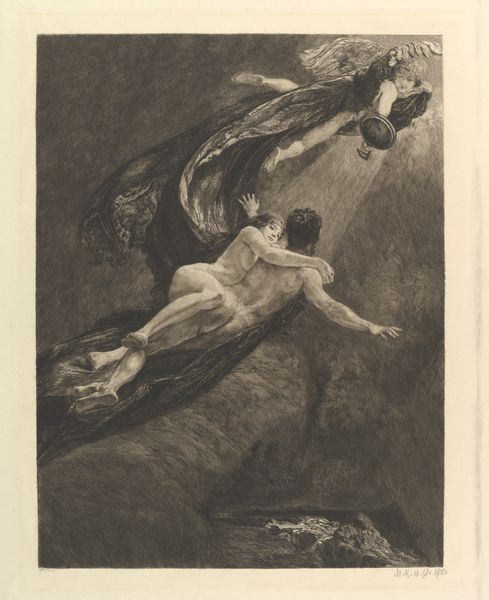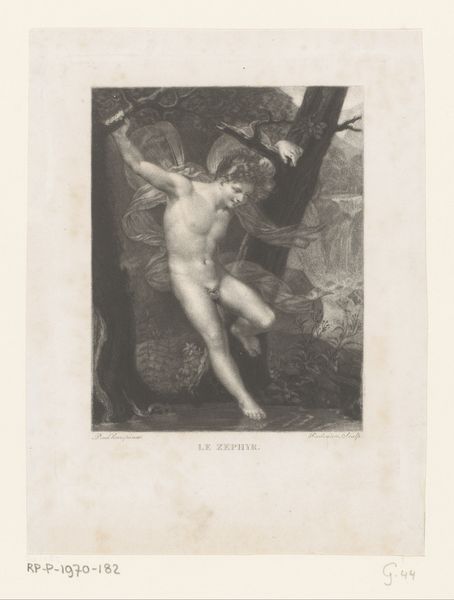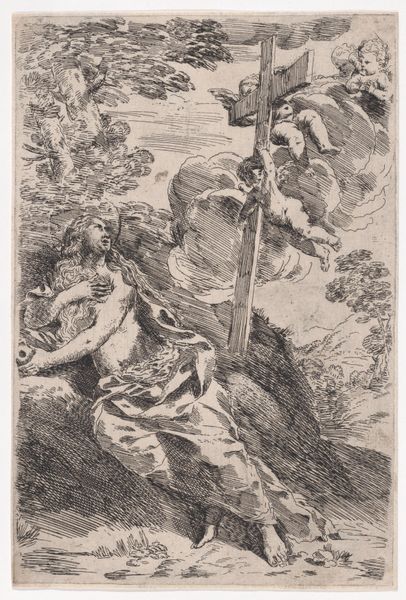
Zeit und Ruhm, from the series Vom Tode Zweiter Teil 1870 - 1920
0:00
0:00
drawing, print, etching, intaglio, engraving
#
drawing
# print
#
etching
#
intaglio
#
figuration
#
line
#
symbolism
#
history-painting
#
engraving
Dimensions: Image: 14 1/4 × 10 1/8 in. (36.2 × 25.7 cm) Plate: 17 13/16 × 10 13/16 in. (45.3 × 27.5 cm) Sheet: 21 15/16 × 15 3/4 in. (55.7 × 40 cm)
Copyright: Public Domain
Editor: This is "Zeit und Ruhm" or "Time and Glory," an etching and engraving by Max Klinger, made sometime between 1870 and 1920. It’s part of his series "Vom Tode Zweiter Teil," and it looks like an allegorical scene of death or defeat. What do you see in this piece, considered from a purely formal perspective? Curator: Immediately striking is the stark contrast rendered through meticulous engraving and etching techniques. The composition guides our eye; notice the prominent figure, clad in armor, positioned triumphantly over another, seemingly vanquished. Note also the division of space – how does the landscape, almost a backdrop, interact with the foreground action? Editor: The landscape feels disconnected, almost like a stage set. And there's so much detail, especially in the figure’s armor. How do these details contribute to the artwork’s impact? Curator: The detailed rendering, particularly of the armor, draws our attention to the surface and texture. This isn't mere representation; it is Klinger utilizing the medium to emphasize materiality, and perhaps even the weight of power. Do you observe how the line quality changes in different parts of the image? Editor: Yes, the lines seem much finer and lighter in the background landscape than in the foreground figures. It almost creates depth through line weight. Curator: Precisely. Klinger manipulates the engraving to create a sense of recession and to highlight the central drama. The lines themselves construct a hierarchy of importance. The rigorous construction allows us to consider what pictorial means are used to depict intangible concepts such as "time" and "glory." What could be the meaning behind such deliberate decisions, without resorting to external context? Editor: That makes me consider the balance – or imbalance – between the crispness of the central figures and the more ethereal background. Thanks! I see the composition and lines much differently now. Curator: Indeed. By isolating the formal elements, we gain a deeper understanding of how Klinger conveyed his ideas about mortality. Analyzing this reveals artistic choices that have a potent effect, beyond any historical context.
Comments
No comments
Be the first to comment and join the conversation on the ultimate creative platform.
